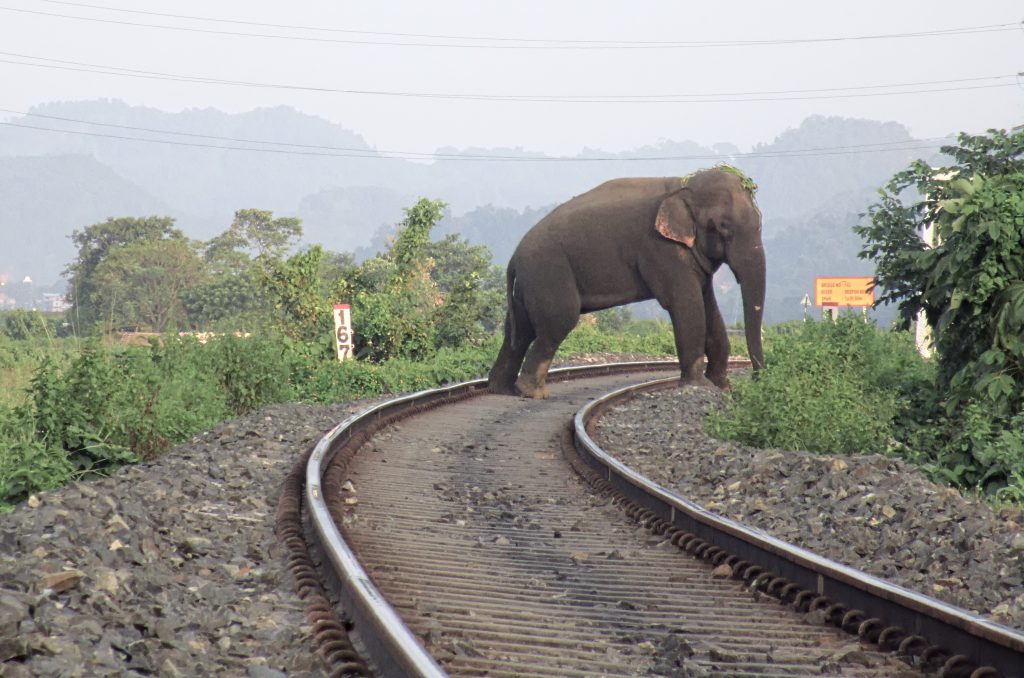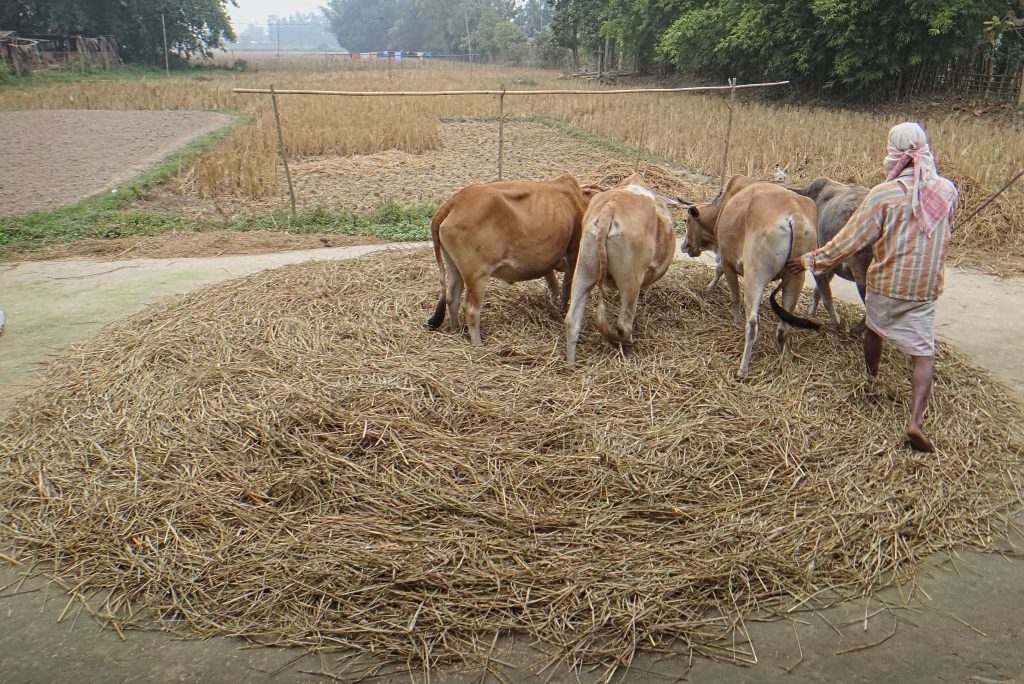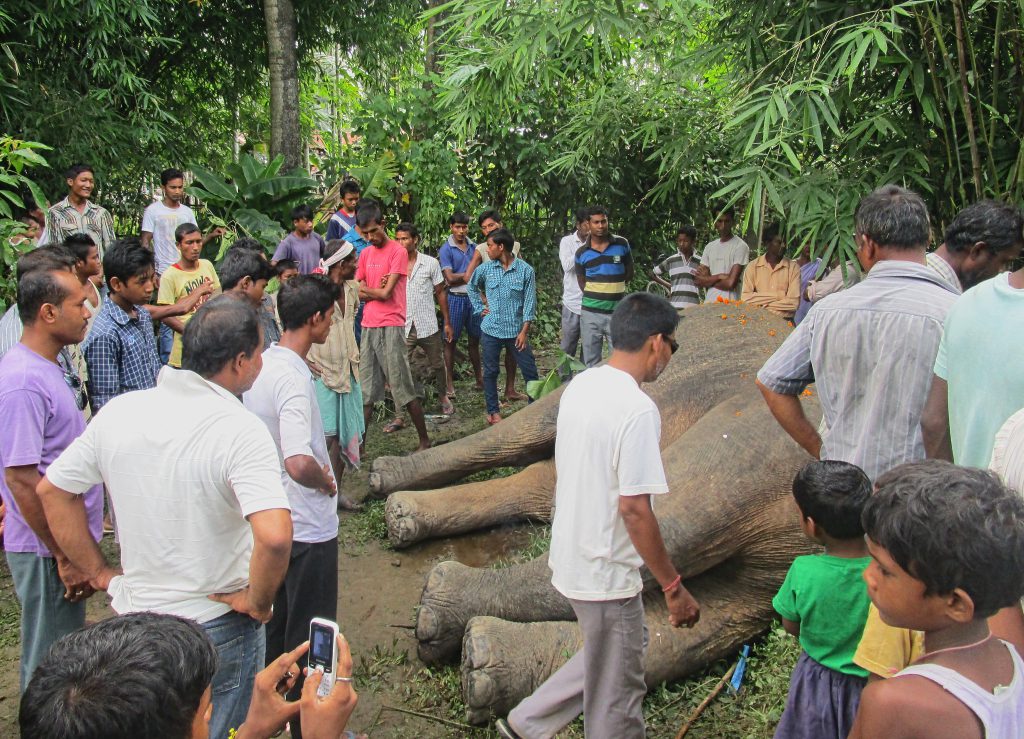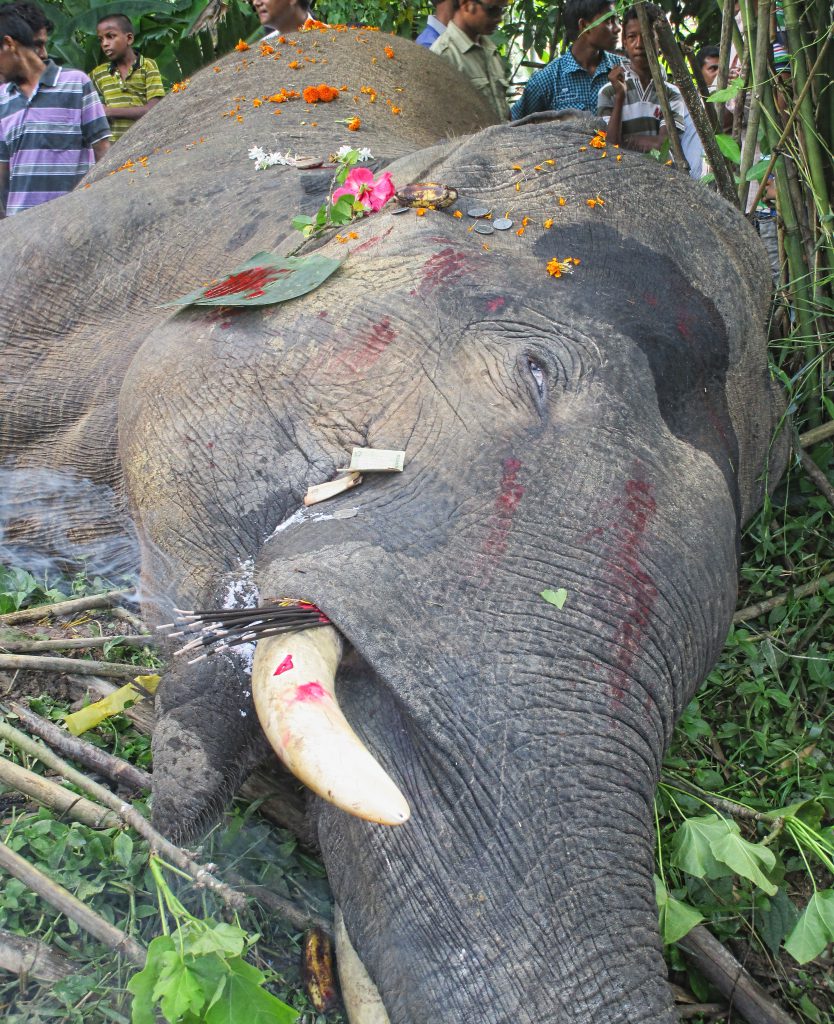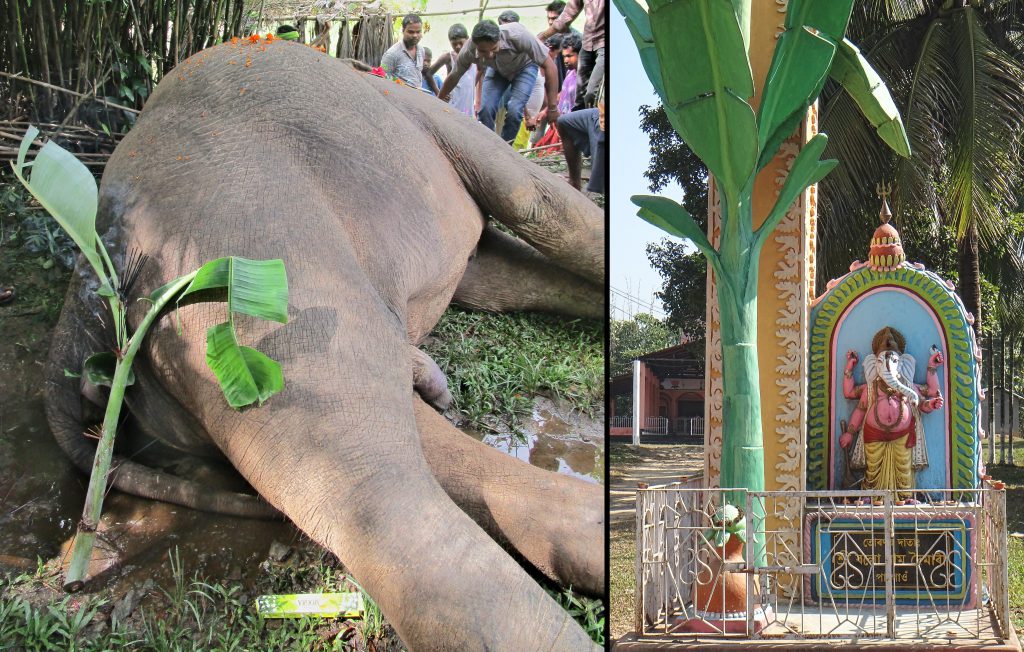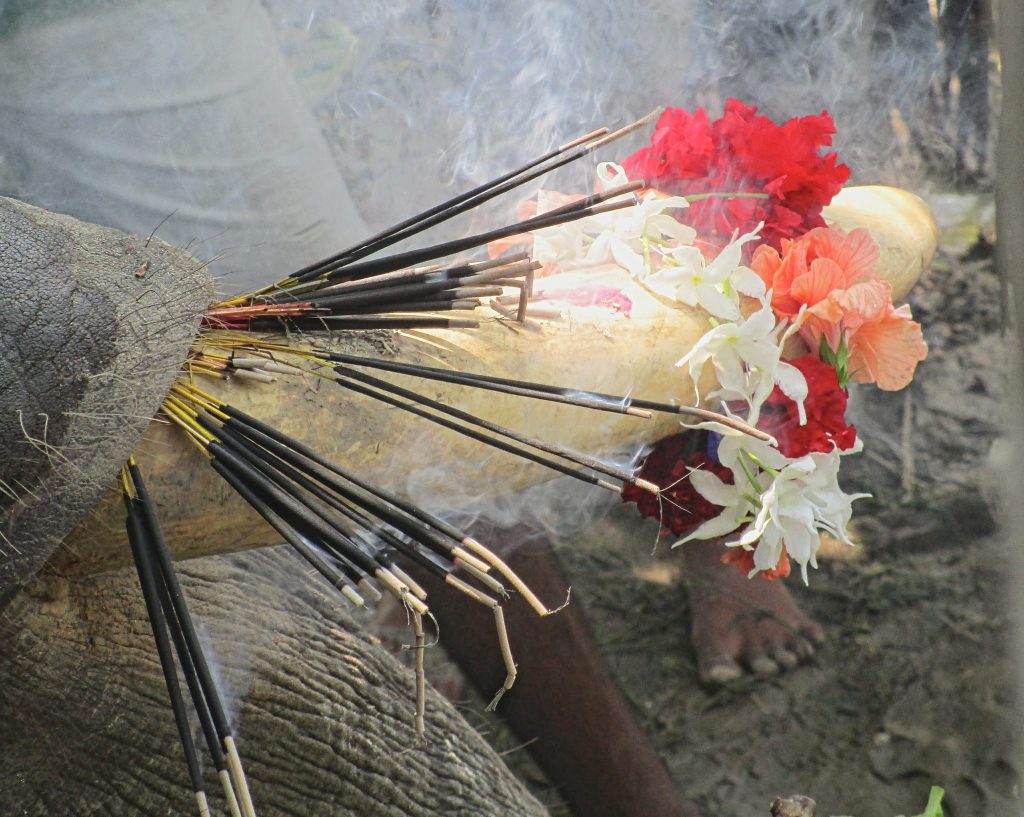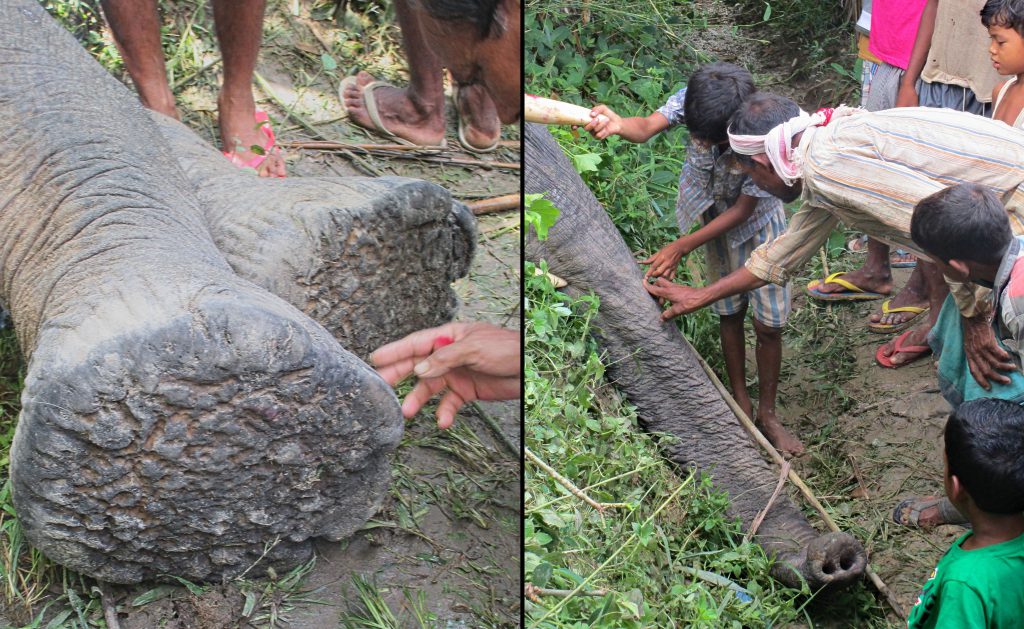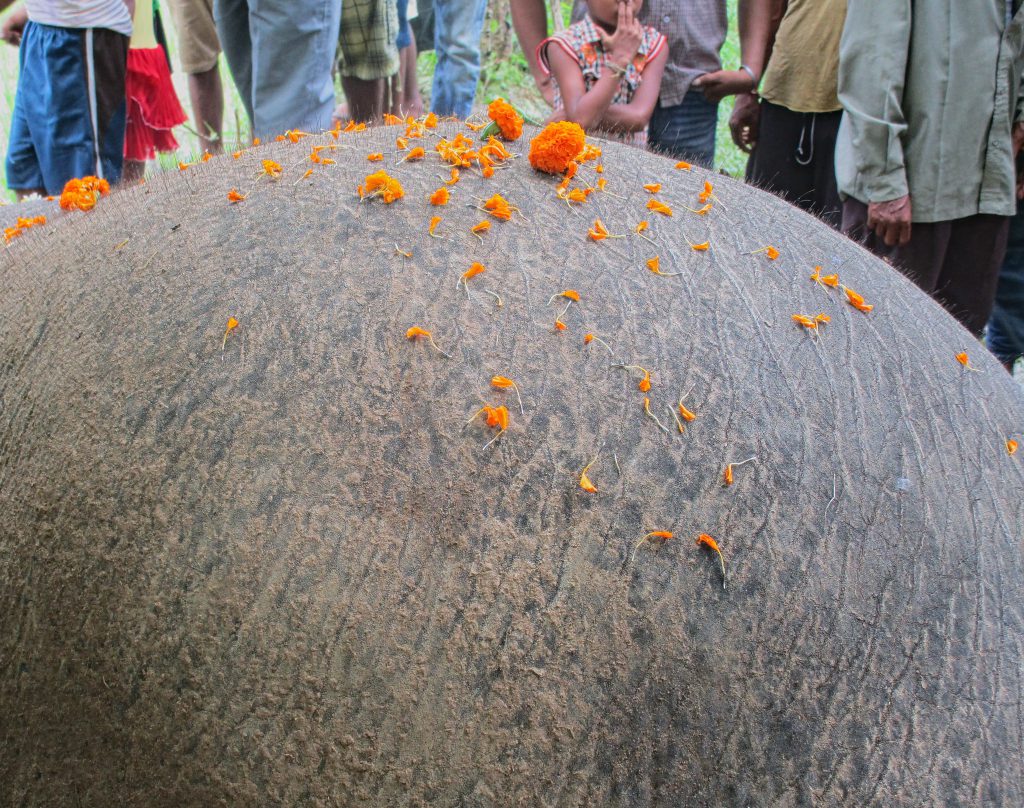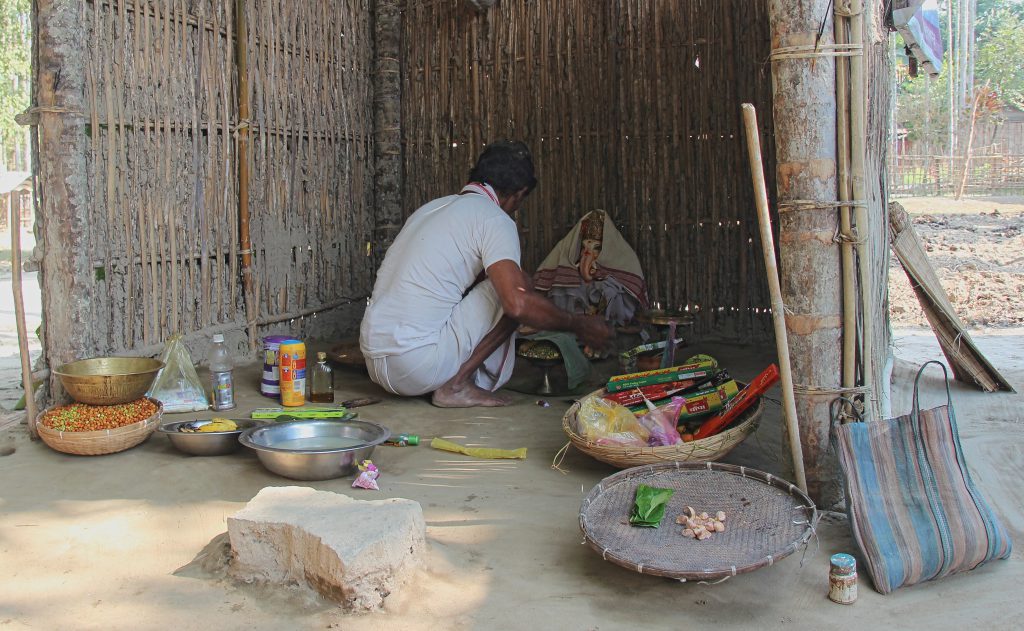The Death of a Hungry God
One evening in August 2014, a wild elephant was accidentally killed in Gajbari village in Assam, a state in northeast India. [1] [1] The name of the actual village has been changed at the request of the author. He was a young adult male with tusks, or “tusker,” who, along with two other males, was known to regularly forage at night in the neighborhood. While eating bamboo leaves in someone’s yard, the elephant unwittingly touched a dangerously low-hanging power line and was electrocuted. He died instantly. The next morning, a steady stream of people from the local area visited the body. It was a rare spectacle to see a dead elephant, and villagers were curious to view the animal close-up in daylight. It was also a chance to see and interact with a god.
From 1880 to 2013, 61 percent of Assam’s forests have been lost due to human development, resulting in the destruction, fragmentation, and degradation of elephant habitat. A lack of adequate food and space means that the 5,700 wild Asian elephants scattered across the state have grown more dependent on domestic produce and are encountering people more often. Every night in the months prior to harvest, herds will “raid” village paddy fields, often for rice, which is the primary crop in Assam. Elephants can cause massive economic loss, sleep deprivation, and severe anxiety for impoverished farmers who are desperately trying to protect their farmland. Both humans and elephants become frustrated, aggressive, and sometimes violent with each other when competing over crops, at times resulting in the deaths of either party. The term “conflict” is commonly used to characterize the human-elephant relationship in the 21st century.
Yet the complex nature of the interaction between these two species is not wholly antagonistic, and the status of elephants is not simply that of “agricultural pest.” In 2013 and 2014, I spent 18 months doing ethnographic research on human-elephant relations in Assam. The people I worked with considered elephants as too intelligent, aware, and impressive to be mere animals. Many Assamese spoke of how elephants can perceive the hidden intentions and moral character of people. Villagers approached elephants with respect and sometimes communicated with them through worshipful gestures. Elephants seemed to recognize these acts and reciprocate by not disturbing reverent persons. More than simply animals, elephants in Gajbari and the surrounding neighborhood were living, breathing incarnations of the Hindu god Ganesh.
































